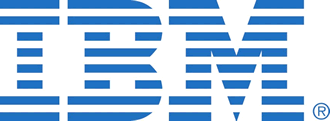 IBM shocked the cocaine nose jobs of Wall Street by giving up its 2015 operating earnings target and moaning that it was suffering from a bad dose of weak client spending and a slumping software sector.
IBM shocked the cocaine nose jobs of Wall Street by giving up its 2015 operating earnings target and moaning that it was suffering from a bad dose of weak client spending and a slumping software sector.
IBM shares fell nearly seven percent to a three year low, which must really hack off Warren Buffett whose Berkshire Hathaway owns seven percent of IBM shares. The decline shaved more than $13 billion off Big Blue’s market cap, which stood at $182 billion at the stock market close on Friday.
Ginni Rometty, IBM chairman, president and chief executive officer said that the result was disappointing and that the company saw a marked slowdown in September in client buying behavior, and our results also point to the unprecedented pace of change in our industry.
In a move to rid itself of one underperforming business, IBM also said on Monday it will hive off its loss-making semiconductor unit to contract chipmaker Globalfoundries.
“Some of these fundamental shifts in the industry are happening faster than we planned,” Rometty said on a call with analysts. “We are continuing to remix to higher value.”
To be fair, IBM is hardly the only technology company having a hard time keeping up. German software maker SAP cut its 2014 operating profit forecast on Monday, citing a faster-than-expected move to cloud-based software. Oracle has similar problems.
Revenue from the company’s cloud service unit, which allows businesses to access software and data remotely, grew more than 50 percent in the quarter, while mobile revenue doubled.
Still, they were not enough to offset weakness in servers and other hardware, as well as some software business lines.
IBM is spending $600 million for “workforce restructuring,” but did not specify how many employees would be cleaning out their desks.
IBM, which said it would announce a new operating earning per share target for 2015 in January, reported a 4 percent drop in third-quarter revenues as clients held back on spending in September.
Revenue fell to $22.4 billion in the quarter from $23.34 billion a year earlier. Wall Street expected $23.37 billion.
Net profit from continuing operations dropped to $3.46 billion, or $3.46 per share, from $4.14 billion, or $3.77 per share in the same quarter last year.
 While the services market grew in 2013, revenues failed to shine.
While the services market grew in 2013, revenues failed to shine.


















